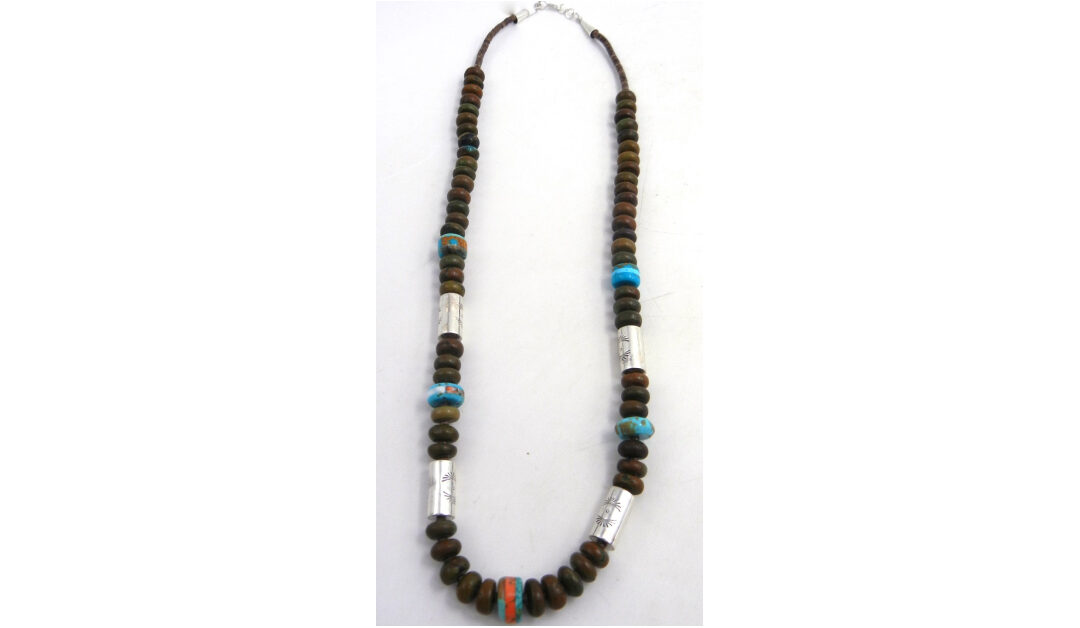Heishi beads have long captured the attention of collectors and enthusiasts alike, but what are heishi beads, and what makes them so special? To truly appreciate these exquisite pieces of jewelry, it’s essential to understand their meaning, origin, and the artistry involved in creating them. From their deep-rooted cultural significance to the meticulous craftsmanship that goes into every bead, heishi beads are more than just adornments—they are symbols of history, culture, and tradition.
Understanding Native American Heishi Beads
Native American heishi beads are among the oldest forms of jewelry, originating from the Santo Domingo (Kewa) Pueblo in New Mexico. These beads are traditionally made from natural materials such as shells, stones, and even bones, which are carefully shaped into small, uniform pieces. The word “heishi” itself comes from the Keresan word meaning “shell bead,” highlighting the primary material used in the earliest forms of this jewelry.
Heishi beads are not just a product of artistry; they are a product of cultural heritage that has been passed down through generations. The making of these beads requires immense skill and patience, as each bead is handcrafted to perfection. This meticulous process is why authentic Native American heishi beads are highly valued and sought after by collectors and jewelry enthusiasts worldwide.
The Heishi Beads Meaning and Origin
The meaning of heishi beads goes beyond their physical beauty. Traditionally, they hold spiritual significance for the Native American communities that create them. The heishi beads’ spiritual meaning is often associated with protection, healing, and connection to nature. The beads are believed to carry the energies of the materials from which they are made—whether it’s the calming properties of the turquoise stone or the grounding energy of shell.
The origin of heishi beads can be traced back over a thousand years, making them one of the earliest forms of jewelry in the Southwest. Initially, these beads were created from natural materials readily available in the region, such as shells gathered from ancient sea beds or stones collected from nearby quarries. Over time, the art of making heishi beads evolved, but the traditional techniques and cultural significance remain deeply embedded in the practice.
What Are Heishi Beads Made Of?
So, what are heishi beads made of? Traditionally, heishi beads are crafted from a variety of materials, each chosen for its unique properties and spiritual significance. The most common materials include:
- Shells: One of the most traditional materials, shells used for jewelry, such as spiny oyster, mother-of-pearl, and clam shells, are highly valued for their vibrant colors and smooth texture. Shells are often associated with water and emotional balance in Native American spirituality.
- Stones: Turquoise, coral, and jet are some of the stones commonly used in heishi beads. Turquoise, in particular, is prized for its protective qualities and is a symbol of life and good fortune.
- Bones and Wood: In some cases, bones and wood are also used to create heishi beads, adding an earthy, grounded element to the jewelry.
Creating heishi beads involves cutting the chosen material into small pieces, drilling a hole through each piece, and then stringing them together to form a necklace or bracelet. The process requires precision and patience, especially when working with harder materials like stone. For those curious about the intricate process, learning how to make heishi beads can provide a deeper appreciation for the skill involved.
How to Spot an Authentic Heishi Bead Necklace
With the popularity of heishi bead necklaces, it’s essential to know how to distinguish authentic pieces from imitations. Here are some tips to help you spot a genuine heishi bead necklace:
- Material Quality: Authentic heishi beads are made from natural materials. Look for the telltale signs of genuine stones and shells, such as slight imperfections, natural color variations, and weight.
- Craftsmanship: Heishi beads are traditionally handcrafted, so each bead should be slightly unique. Uniformity in size and shape is a sign of skilled craftsmanship, but overly perfect beads may indicate machine production.
- Source: Purchasing from reputable sources, such as Palm’s Trading Company, ensures the authenticity of your Heishi necklaces. Reputable traders have a long-standing relationship with Native American artisans and provide documentation of authenticity.
- Price: While price alone isn’t an indicator of authenticity, genuine heishi bead necklaces, especially those made from rare or high-quality materials, can be expensive. If the price seems too good to be true, it probably is.
Knowing how to spot an authentic Heishi bead necklace not only ensures that you’re investing in a genuine piece of Native American heritage but also supports the artisans who continue this centuries-old tradition.
Whether you’re drawn to the spiritual significance, the intricate craftsmanship, or the rich history behind them, owning an authentic heishi bead necklace is like holding a piece of cultural heritage. To learn more about heishi beads or to explore our collection, contact Palms Trading today. The experts at our Native American arts trading company are here to guide you in finding the perfect piece that resonates with you.



